In the mid-nineteenth century, Boston, Massachussetes, was a boomtown. Advancement in public works and infrastructure allowed for major economic growth, the transfer of ideas between citizens, and ultimately a new and, in some ways, freer quality of life for its residents. It was one that allowed Americans to invent, engage in new and creative ways, and to even actually enjoy themselves sometimes in their young country.
That meant there were opportunities to think about more than just the basics necessary for survival, and it was into this environment that The New England Candy Company (Necco) was born, as one of many new businesses bringing jobs and revenue to the local economy. By launching candies like the now iconic Sweethearts (a Valentine’s Day staple), Necco came into its own after its 1847 founding in the nearby town of Revere.
For me, growing up in New England meant that every single autumn my trick-or-treat bag was bursting with the famous multi-flavored and -colored Necco wafers, a dusty, chalky sort of sweet that became associated with so many happy childhood memories for my peers and me. But then in 2018, the factory abruptly closed up shop, leaving sweet-seekers panicked and without a single place to get their hands on Sky Bars, Clark Bars, Squirrel Nut Zippers and Mary Janes.
Today, as almost all industries march continuously toward consolidation, the candy business is not spared. Brands are shuttering or being snapped up by the likes of Hershey’s, Haribo, Lindt and Mars and other conglomerates and multinationals. And while some brands and classics are absorbed, remaining in production under these new umbrellas, others are killed off, sent off to the sweet little candy store in the sky.
Which is why we think the rare remaining independent candy companies and producers should be embraced, supported and celebrated. They continue to provide employment for their communities, dollars to their local economies—not to mention smiles to generations of snackers in their regions.
Once upon a time, these regional candies were only available near their origin source, but thanks to globalization and a little thing called the internet, these sweets reach audiences far and wide and find a whole new following. In honor of the holiday, we’re exploring some of those various options and encourage you to do the same—it may even help keep some of these candies from the Halloween graveyard where my beloved Necco wafers now lie.
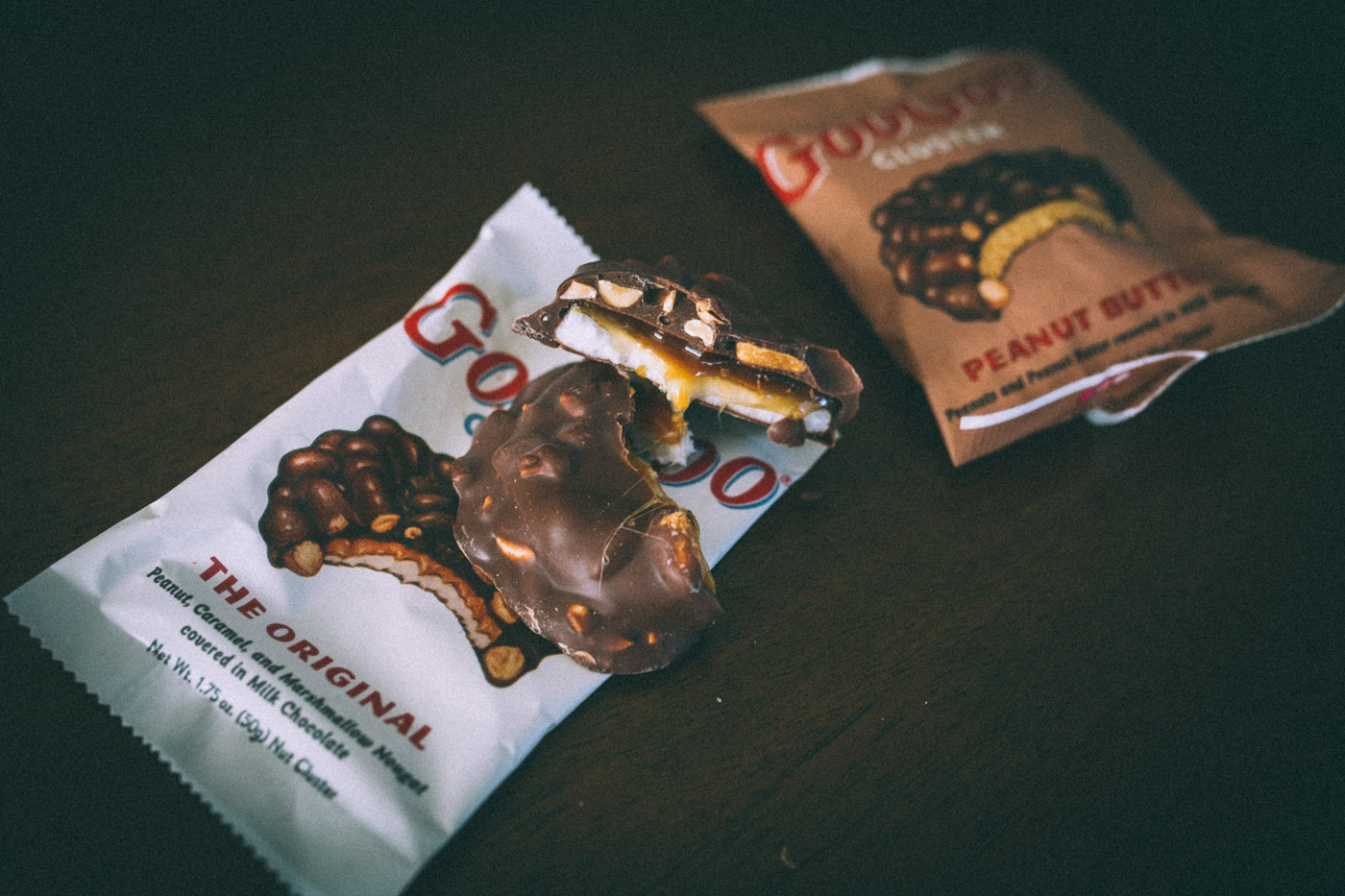
Goo Goo Clusters
Origin: Nashville, Tennessee
Given its round and flat format, it’s hard to call the Goo Goo a candy “bar,” per se. Yet, in 1912, the Standard Candy Company made history when it created a confection that would be hard pressed to live in any other category. It was the first of its kind in that it combined multiple kinds of candy into the same package: when you bite into a Goo Goo, you get a mouthful—marshmallow, nougat, caramel, roasted peanuts all wrapped up in milk chocolate.
The Goo Goo name comes from the narrative that it may be the first thing a newborn will want to ask for. The Goo Goo went on to spawn several variations, including the once-named “Supreme” (now just called the Pecan), and the Peanut Butter Goo Goo (swap nougat and caramel for peanut butter). At their factory store in Downtown Music City, you’ll even find collaborations with local chefs. In years past, culinary figures like Margot McCormak of Margot Café, who co-created a “Margoo” with candied hazelnuts, hazelnut butter, local shortbread, and dark chocolate, or John Lasatar of Hattie B’s, who translated their hot chicken and waffles into confection form with spicy chili ganache, maple syrup caramel, brown sugar maple nougat, and Jeni’s Waffle Cone Crunch. Goo Goo Clusters may be more than a century old, but their youthful philosophy keeps them curious in the culinary world.
For fans of: Snickers, Baby Ruth, Oh Henry!
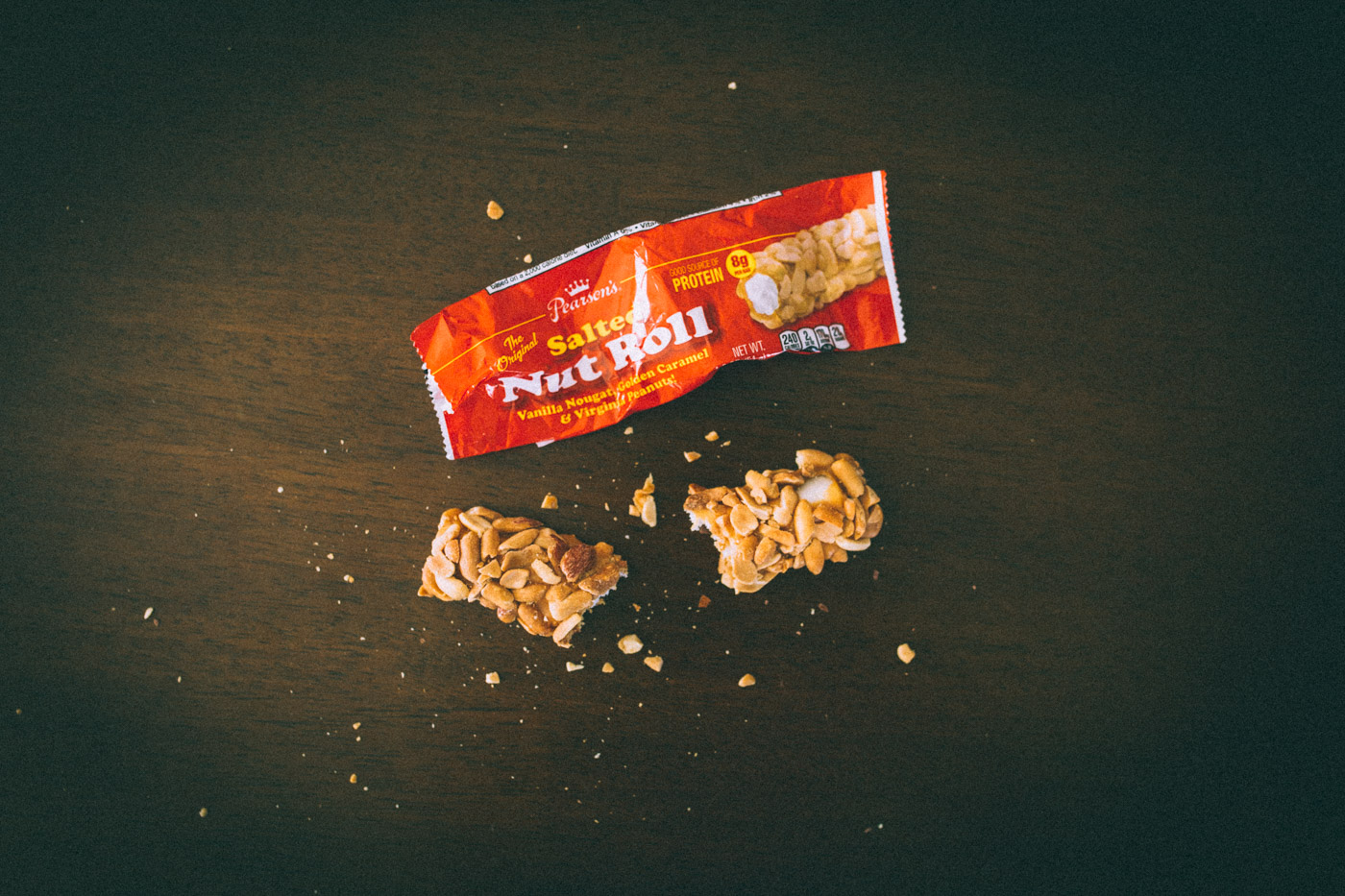
Pearson’s Salted Nut Roll
Origin: St. Paul, Minnesota
In St. Paul, nougat centers are enrobed in chewy caramel and then rolled in classic, renowned Virginia peanuts. It’s a very similar composition to the Hershey’s-produced PayDay, and were introduced around the same time during the Great Depression. Perhaps the world was in desperate need of protein and calories in an inexpensive form (another of Pearson’s staples, the Nut Goodie Bar, sold for a nickel).
Pearson’s had already been in operation since 1909 when three brothers—P. Edward, John and Oscar—launched their manufacturing and distribution company.
For a brief period, the bar was renamed the “Choo Choo,” but unlike those peanuts to sugary caramel, the name didn’t stick. Today, customers can still find Pearson’s Salted Nut Rolls, as well as seasonal variations like Salted Pecan Rolls and chocolate covered versions in stores near their production origin of the American Midwest.
For fans of: PayDay
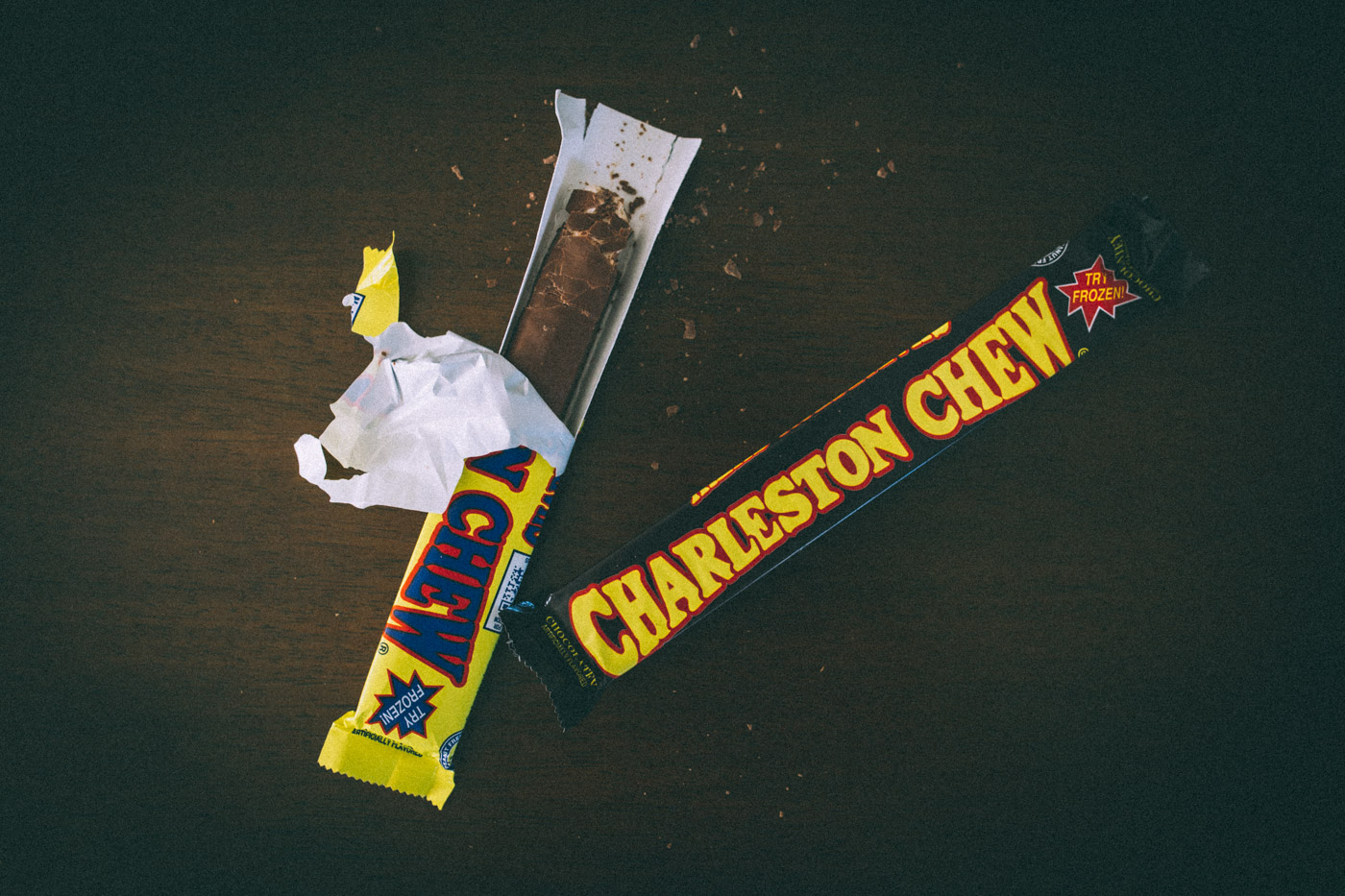
Charleston Chew
Origin: Boston, Massachusetts
The golden age of candy spawned so many classics, and the Charleston Chew—originally released in 1925—was no exception. It’s one of the simplest candy bars consisting of nougat (either chocolate or vanilla flavored) and covered in chocolate. This bar arrived before the world knew what it was in for a few years down the line with the Depression, and was instead an ode to the high times of the Roaring Twenties, and was thus named after the Jazz Age dance sensation, “The Charleston.”
The Fox-Cross Candy Company, the Chew’s original inventor, was sold to Nabisco in 1980, and changed hands a few more times over the years, eventually landing in the hands of Tootsie Roll Industries. Today, you can enjoy the Charleston Chew in the original flavors, as well as banana and strawberry. When Halloween rolls around, consumers also benefit from the fun-size format, the “Mini Charleston Chew,” an ideal trick-or-treating option.
For fans of: Cow Tails
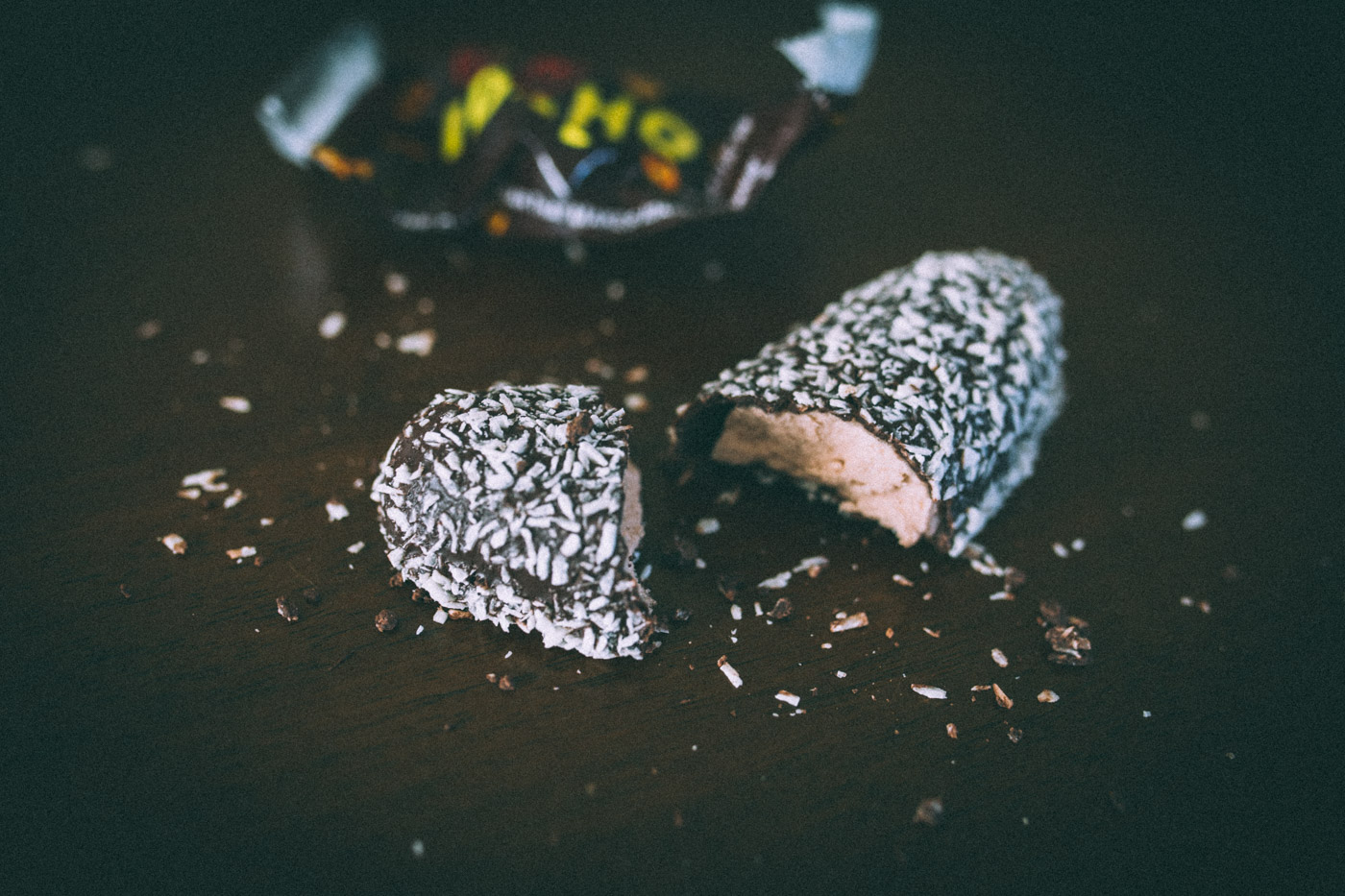
Idaho Spud
Origin: Boise, Idaho
One of the strangest candy bars in the country’s history is no bar at all. It’s the Idaho Spud, a confection with a cocoa marshmallow core and a dark chocolate coating, rolled around in a spread of coconut flakes.
It is—some sweet-lovers may be pleased to find—entirely potato free. This quirky candy is still the Idaho Candy Company’s signature and top selling treat, and has been a flagship since its introduction in 1918. By then, founder T.O. Smith had been in the candy biz for almost two decades, back at the turn of the century when he began as a traveling door-to-door candy salesman. It was 1909 when he opened the doors to his own brick and mortar which allowed its employees a “welfare” room for break time. That factory is where the spuds are still grown today, along with more than fifty other candies including Mint Patties, Butter Toffee, and Old Faithful (which shares some DNA with a Snickers bar or a chocolate covered Salted Nut Roll).
For fans of: Three Musketeers, Mounds, Bounty
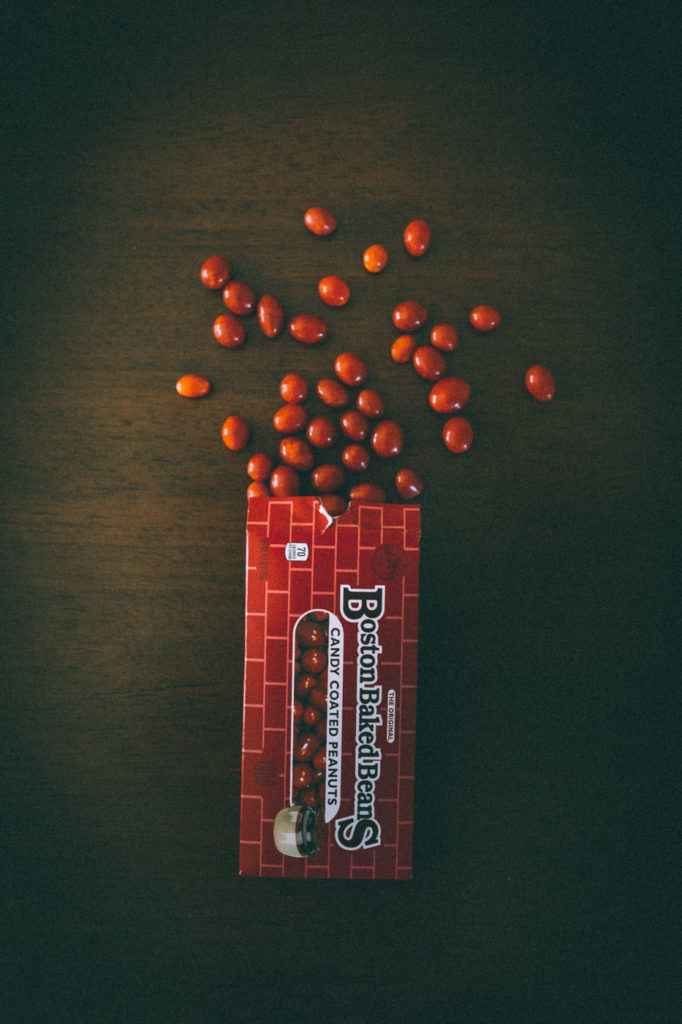
Boston Baked Beans
Origin: Pittsburgh, Pennsylvania
In their truest form, Boston baked beans may be a perfect complementary side dish along with that Idaho Spud. But the ones we’re talking about here satisfy an entirely different course and craving altogether. Although their namesake dish can consist of more than half a dozen ingredients between bean varieties, spices and sweeteners like brown sugar or molasses, the version created in 1930 by Ferrara Pan Candy Company happens to be one of the more stripped down confections on the market. Maybe it’s the simplicity of these candy-coated salted peanuts, dyed red to resemble those little legumes, that has given them such staying power.
While the concept may seem basic, the science behind their creation is actually very functional. Any confectioner knows that working with nuts can be tricky, as freshness is paramount to enjoyment; they can go stale quite fast after roasting. Coating peanuts with crunchy candies insulates and preserves them—much the way a praline or brittle can do for pecans and other nutty counterparts.
The name may put some kids (and even adults) off the stuff, but once you have a handful of these crunchy, salty-sweet candies, the odds are pretty good these beans may find their way into more hands and homes than the original.
For fans of: Jordan almonds, Peanut M&M’s
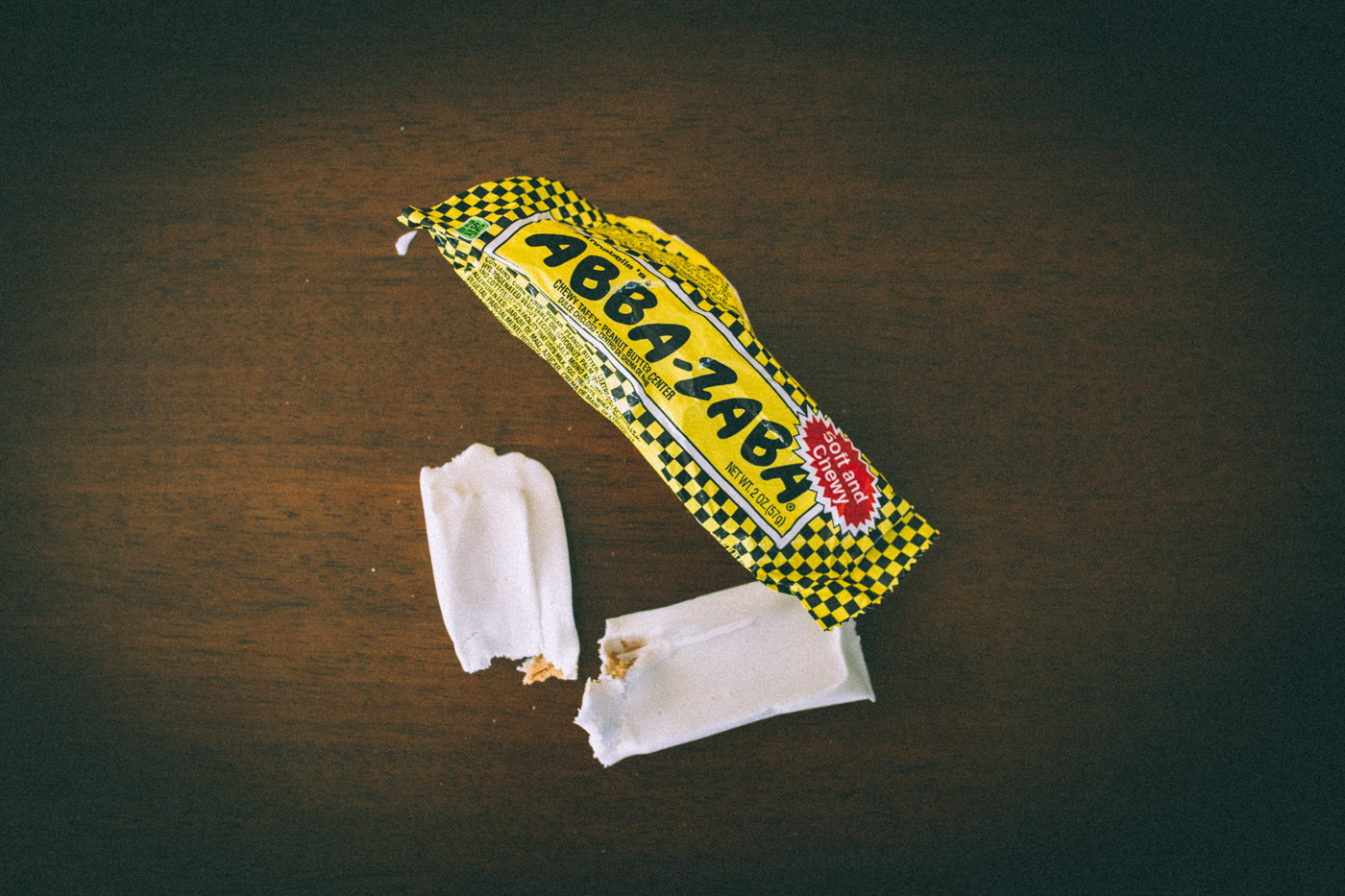
Abba-Zaba
Origin: Hayward, California
A truly unique candy when you consider the chocolate-caramel-crunch formula that dominates the candy aisle, the California-born Abba-Zaba is a flat and sticky taffy filled with peanut butter, now produced by the Annabelle Candy Company. The simplicity of this candy is rare for an industry in which more is always more.
Furthering its singularity, the iconic yellow and black checkered package designed in 1922 for its original release hasn’t changed one bit since. It’s hard to know if it’s the flavor or the aesthetic that has made this very specific regional treat into a pop culture favorite, but the Abba-Zaba has made appearances everywhere from albums by the likes of Tom Waits to films like Half Baked, and more recently, episodes of Gilmore Girls, Amazon’s The Marvelous Mrs. Maisel, and HBO’s Sharp Objects. They’re even counted among John Wayne’s favorite snacks—talk about timeless, transcendent appeal.
Maybe in an effort to protect their treats from the SoCal sun, some Abba-Zaba enthusiasts insist they’re best enjoyed straight from the freezer. And while the original is still the most popular, a variation now exists, made with green apple taffy and chocolate filling for those looking for a slightly different spin.
For fans of: Airheads slathered with Skippy? Seriously, who knew this would work…

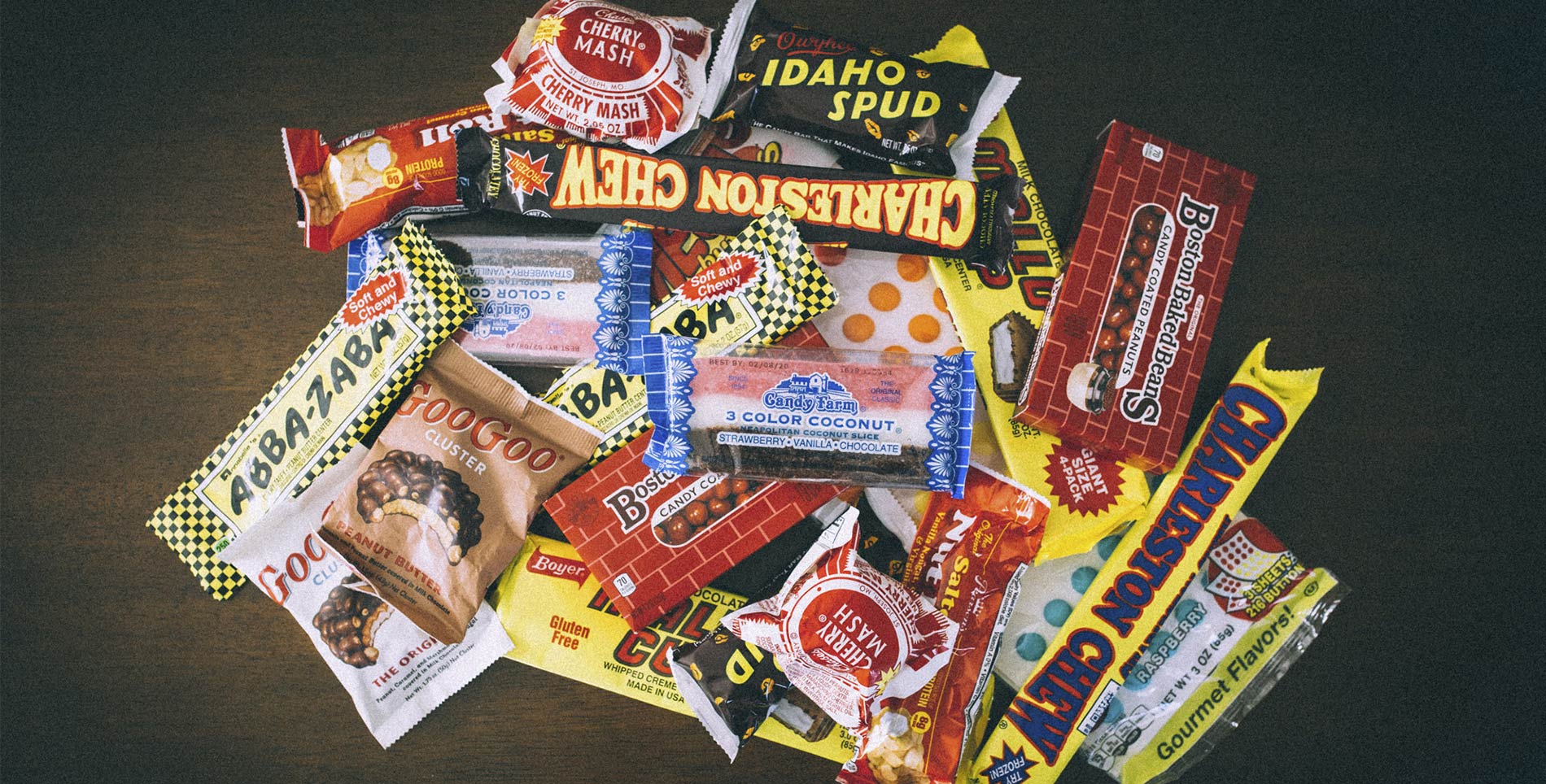

Our comments section is for members only.
Join today to gain exclusive access.